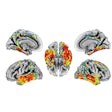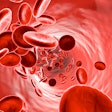Microscopy & Imaging: Page 2
AI developer OxDx raises millions for AI-powered diagnostics
February 14, 2022
ContextVision prepares for spinoff of digital pathology arm
February 13, 2022
Scopio completes $50M funding round
February 10, 2022
Agilent highlights automation platforms at SLAS 2022
February 8, 2022
Digital pathology recovers from COVID setback
February 2, 2022
Digital pathology offers time savings to pathologists
January 24, 2022
Apollo secures Vizient contract for digital pathology
January 23, 2022
Deep Bio, Tribun collaborate on AI-based digital pathology
November 30, 2021
OptraScan, Inspirata to partner
November 9, 2021











